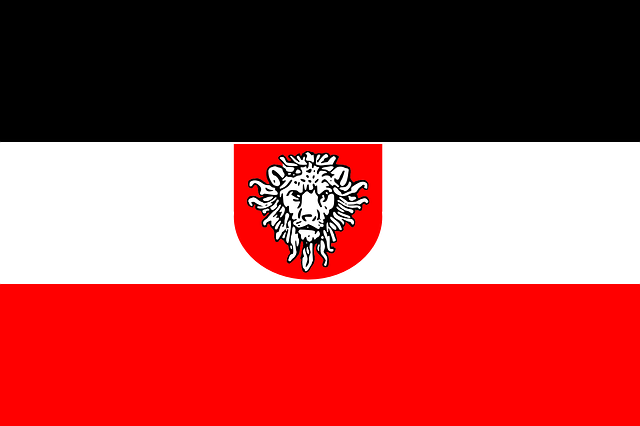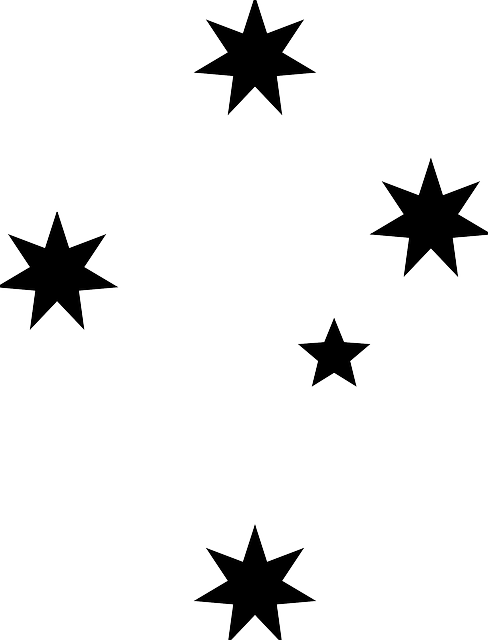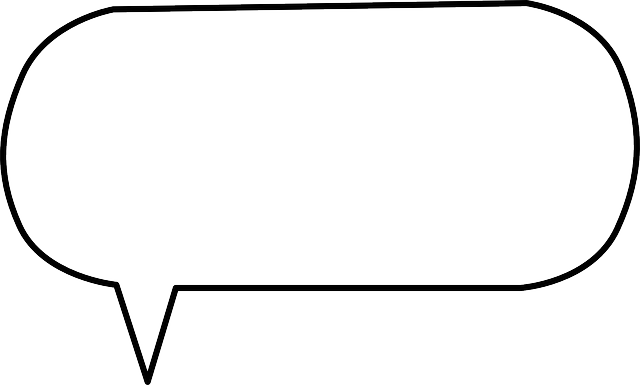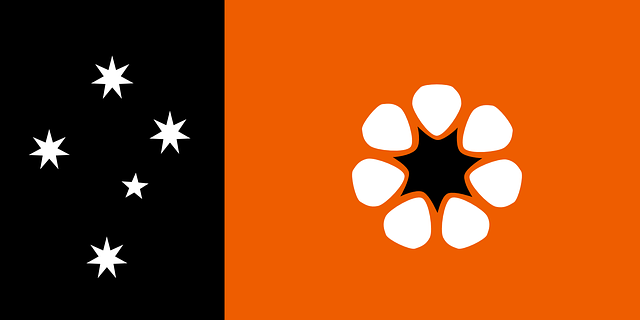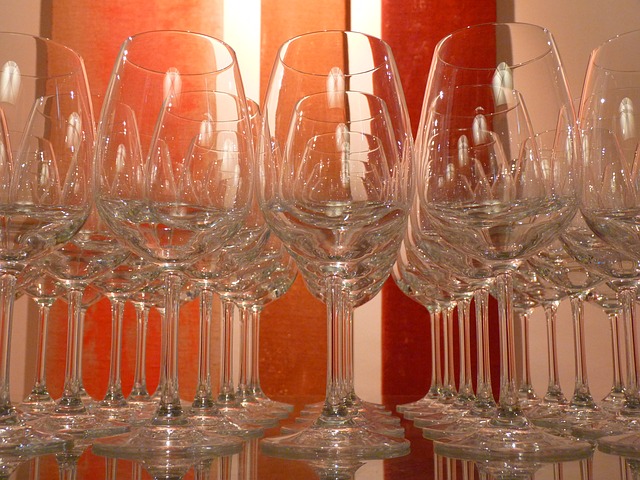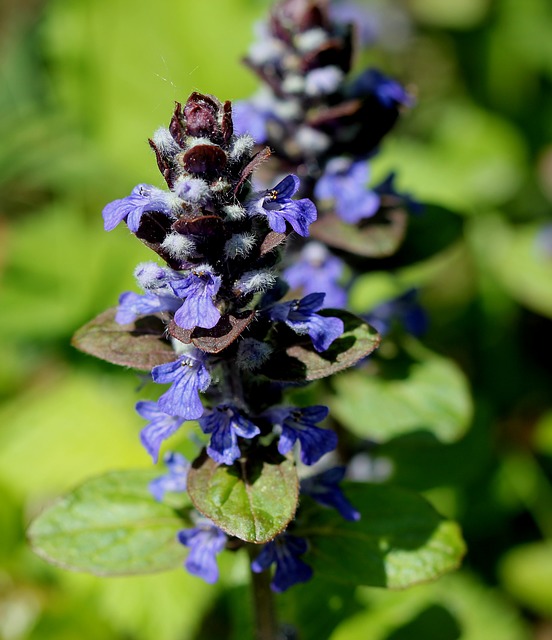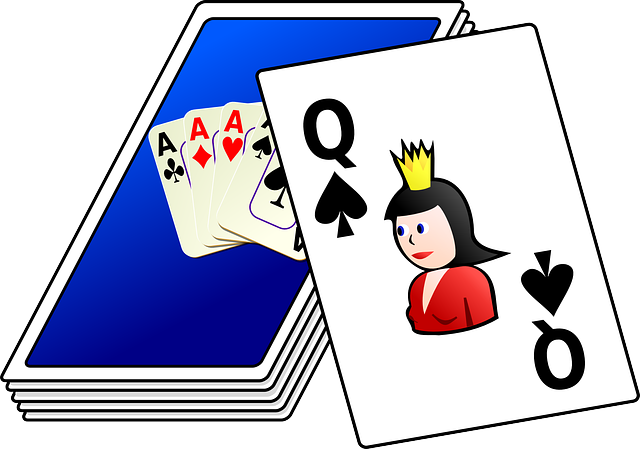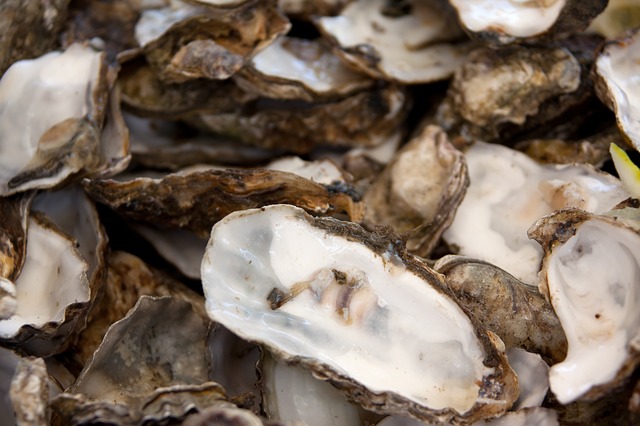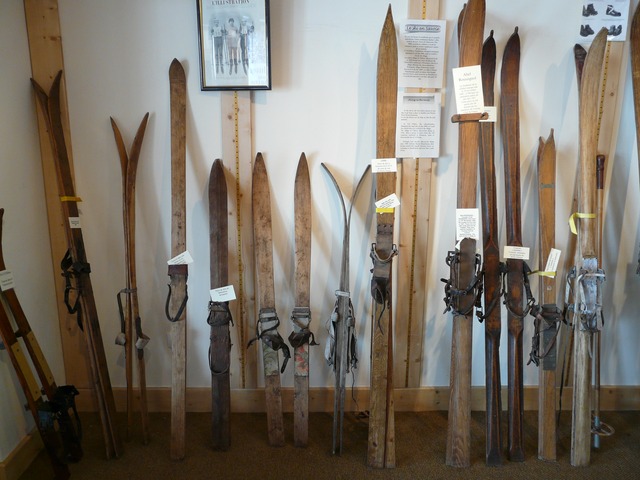مضى غروي
|
مجموعة سلسلة منطقات عن |
|
الفولرين |
|
جسيمات النانو |
|
انظر أيضا |
المضى الغرواني Colloidal gold، هوis a suspension (or colloid) of sub-micrometre-sized particles of gold in a fluid — usually water. The liquid is usually either an intense red colour (for particles less than 100 nm), or a dirty yellowish colour (for larger particles). Due to the unique optical, electronic, and molecular-recognition properties of gold nanoparticles, they are the subject of substantial research, with applications in a wide variety of areas, including electron microscopy, electronics, nanotechnology, and materials science.
Properties and applications of colloidal gold nanoparticles depends upon shape. For example, rodlike particles have both transverse and longitudinal absorption peak, and anisotropy of the shape affects their self-assembly.
Nanogold is a trademarked variety of colloidal gold.
التاريخ
Known since ancient times, the synthesis of colloidal gold was originally used as a method of staining glass. Modern scientific evaluation of colloidal gold did not begin until Michael Faraday's work of the 1850s. A so-called Elixir of Life, a potion made from gold, was discussed, if not actually manufactured, in ancient times. Colloidal gold has been used since Ancient Roman times to colour glass intense shades of yellow, red, or mauve, depending on the concentration of gold, and in Hindu Chemistry, for various potions. In the 16th century, the alchemist Paracelsus claimed to have created a potion called Aurum Potabile (Latin: potable gold). In the 17th century the glass-colouring process was refined by Andreus Cassius and Johann Kunckel. In 1842, John Herschel invented a photographic process called Chrysotype (from the Greek word for gold) that used colloidal gold to record images on paper. Paracelsus' work is known to have inspired Michael Faraday to prepare the first pure sample of colloidal gold, which he called 'activated gold', in 1857. He used phosphorus to reduce a solution of gold chloride.
For a long time the composition of the Cassius ruby-gold was unclear. Several chemists suspected it to be a gold tin compound, due to its preparation. Faraday was the first to recognise that the colour was due to the minute size of the gold particles. In 1898 Richard Adolf Zsigmondy prepared the first colloidal gold in diluted solution. Apart from Zsigmondy, Sevdberg who invented ultracentrifugation and Mie, who provided the theory for scattering and absorption by spherical particles, were also interested in understanding synthesis and properties of colloidal gold.
الهجريب
Generally, gold nanoparticles are produced in a liquid ("liquid chemical methods") by reduction of chloroauric acid (H[AuCl4]), although more advanced and precise methods do exist. After dissolving H[AuCl4], the solution is rapidly stirred while a reducing agent is added. This causes Au3+ions to be reduced to neutral gold atoms. As more and more of these gold atoms form, the solution becomes supersaturated, and gold gradually starts to precipitate in the form of sub-nanometer particles. The rest of the gold atoms that form stick to the existing particles, and, if the solution is stirred vigorously enough, the particles will be fairly uniform in size.
To prevent the particles from aggregating, some sort of stabilizing agent that sticks to the nanoparticle surface is usually added. They can be functionalized with various organic ligands to create organic-inorganic hybrids with advanced functionality..It can also be synthesised by laser ablation.
طريقة هجرڤيتش
The method pioneered by J. Turkevich et al. in 1951 and refined by G. Frens in 1970s, is the simplest one available. Generally, it is used to produce modestly monodisperse spherical gold nanoparticles suspended in water of around 10-20 nm in diameter. Larger particles can be produced, but this comes at the cost of monodispersity and shape. It involves the reaction of small amounts of hot chlorauric acid with small amounts of sodium citrate solution. The colloidal gold will form because the citrate ions act as both a reducing agent, and a capping agent.
Recently, the evolution of the spherical gold nanoparticles in the Turkevich reaction has been elucidated. Interestingly, extensive networks of gold nanowires are formed as a transient intermediate. These gold nanowires are responsible for the dark appearance of the reaction solution before it turns ruby-red.
To produce larger particles, less sodium citrate should be added (possibly down to 0.05%, after which there simply would not be enough to reduce all the gold). The reduction in the amount of sodium citrate will reduce the amount of the citrate ions available for stabilizing the particles, and this will cause the small particles to aggregate into bigger ones (until the total surface area of all particles becomes small enough to be covered by the existing citrate ions).
طريقة بروست
This method was discovered by Brust and Schiffrin in early 1990s, and can be used to produce gold nanoparticles in organic liquids that are normally not miscible with water (like toluene). It involves the reaction of a chlorauric acid solution with tetraoctylammonium bromide (TOAB) solution in toluene and sodium borohydride as an anti-coagulant and a reducing agent, respectively.
Here, the gold nanoparticles will be around 5-6 nm. NaBH4 is the reducing agent, and TOAB is both the phase transfer catalyst and the stabilizing agent.
It is important to note that TOAB does not bind to the gold nanoparticles particularly strongly, so the solution will aggregate gradually over the course of approximately two weeks. To prevent this, one can add a stronger binding agent, like a thiol (in particular, alkanethiols), which will bind to gold covalently, producing a near-permanent solution. Alkanethiol protected gold nanoparticles can be precipitated and then redissolved. Some of the phase transfer agent may remain bound to the purified nanoparticles, this may affect physical properties such as solubility. In order to remove as much of this agent as possible the nanoparticles must be further purified by soxhlet extraction.
طريقة Perrault
This approach, discovered by Perrault and Chan in 2009, uses hydroquinone to reduce HAuCl4 in an aqueous solution that contains gold nanoparticle seeds. This process is similar to that used in photographic film development, in which silver grains within the film grow through addition of reduced silver onto their surface. Similarly, gold nanoparticles can act in conjunction with hydroquinone to catalyze reduction of ionic gold onto their surface. The presence of a stabilizer such as citrate results in controlled particle growth. Typically, the nanoparticle seeds are produced using the citrate method. The hydroquinone method complements that of Frens, as it extends the range of monodispersed spherical particle sizes that can be produced. Whereas the Frens method is ideal for particles of 12-20 nm, the hydroquinone method can produce particles of at least 30-250 nm.
طريقة مارتين
This method, discovered by the Eah group in 2010, generates “naked” gold nanoparticles in water by reducing HAuCl4 with NaBH4. Even without any other stabilizer like citrate, gold nanoparticles are stably dispersed. The size distribution is nearly monodisperse and the diameter can be precisely and reproducibly tuned from 3.2 to 5.2 nm. The key is to stabilize HAuCl4 and NaBH4 in the aqueous stock solutions with HCl and NaOH for >3 months and >3 hours respectively. In addition, the ratio of NaBH4-NaOH ions to HAuCl4-HCl ions must be precisely controlled in the “sweet zone”. “Naked” gold nanoparticles are coated with a monolayer of 1-dodecanethiol and then phase-transferred to hexane simply by shaking a mixture of water, acetone, and hexane for 30 seconds. Since all the reaction byproducts remain in the water-acetone phase, no post-synthesis cleaning is needed for gold nanoparticles in the hexane phase. The amount of 1-dodecanethiol is only 10 % of gold atoms in number. All these synthesis procedures take just <10 minutes.
These gold nanoparticles coated with hydrophobic organic molecules have a special property for 2D self-assembly, charged in non-polar solvents. They float to the air-toluene interface of a toluene droplet and form a monolayer film, which can be deposited to any substrate after toluene’s evaporation without any sophisticated instruments. A monolayer film of close-packed gold nanoparticles, spatially uniform at all length scales of nm, µm, and mm, is fabricated with no size limit, for example covering the whole surface of a ثلاثة inch silicon wafer.
The precise size control in the diameter range of 3.2 to 5.2 nm is critically important for both the phase-transfer of gold nanoparticles from water to hexane and their 2D self-assembly on a toluene droplet. Each synthesis batch in <10 minutes generates gold nanoparticles of milligrams and scaling up to the gram scale is to be explored.
Sonolysis
Another method for the experimental generation of gold particles is by sonolysis. In one such process based on ultrasound, the reaction of an aqueous solution of HAuCl4 with glucose[], the reducing agents are hydroxyl radicals and sugar pyrolysis radicals (forming at the interfacial region between the collapsing cavities and the bulk water) and the morphology obtained is that of nanoribbons with width 30 -50 nm and length of several micrometers. These ribbons are very flexible and can bend with angles larger than 90°. When glucose is replaced by cyclodextrin (a glucose oligomer) only spherical gold particles are obtained suggesting that glucose is essential in directing the morphology towards a ribbon.
المجهر الإلكتروني
Colloidal gold and various derivatives have long been among the most widely-used contrast agents for biological electron microscopy. Colloidal gold particles can be attached to many traditional biological probes such as antibodies, lectins, superantigens, glycans, nucleic acids, and receptors. Particles of different sizes are easily distinguishable in electron micrographs, allowing simultaneous multiple-labelling experiments.
التطبيقات الطبية والصحية
Colloidal gold has been successfully used as a therapy for rheumatoid arthritis in rats. In a related study, the implantation of gold beads near arthritic hip joints in dogs has been found to relieve pain.
An in vitro experiment has shown that the combination of microwave radiation and colloidal gold can destroy the beta-amyloid fibrils and plaque which are associated with Alzheimer's disease. The possibilities for numerous similar radiative applications are also currently under exploration.
Drug carrier
Gold nanoparticles are being investigated as carriers for drugs such as Paclitaxel. The administration of hydrophobic drugs require molecular encapsulation and it is found that nanosized particles are particularly efficient in evading the reticuloendothelial system.
اكتشاف الأورام
In cancer research, colloidal gold can be used to target tumors and provide detection using SERS (Surface Enhanced Raman Spectroscopy) in vivo. These gold nanoparticles are surrounded with Raman reporters which provide light emission that is over 200 times brighter than quantum dots. It was found that the Raman reporters were stabilized when the nanoparticles were encapsulated with a thiol-modified polyethylene glycol coat. This allows for compatibility and circulation in vivo. To specifically target tumor cells, the pegylated gold particles are conjugated with an antibody (or an antibody fragment such as scFv), against e.g. Epidermal growth factor receptor, which is sometimes overexpressed in cells of certain cancer types. Using SERS, these pegylated gold nanoparticles can then detect the location of the tumor.
Photothermal agents
Gold nanorods are being investigated as photothermal agents for in-vivo applications. Gold nanorods are rod shaped gold nanoparticles whose aspect ratios tune the surface plasmon resonance (SPR) band from the visible to near infrared wavelength. The total extinction of light at the SPR is made up of both absorption and scattering. For the smaller axial diameter nanorods (~10 nm), absorption dominates, whereas for the larger axial diameter nanorods (>35 nm), scattering can dominate. Consequently, for in-vivo applications, small diameter gold nanorods are being used as photothermal converters of near infrared light due to their high absorption cross sections.[] Since near infrared light transmits readily through human skin and tissue, these nanorods can be used as ablation components for cancer, and other targets. When coated with polymers, gold nanorods have been known to circulate in-vivo for greater than 15 hours half life.[]
اضاءة الأشجار
في 24 يناير 2011 قام فهماء من [[أكاديمية العلوم وجامعة چنگ كونگ في تايپي وتاينان بزراعة sea urchin shaped gold nanoparticles, known as bio light emitting diodes, or bio LEDs, داخل أوراق النباتات. ويمكن حتى تحل هذه الغروانيات محل الطاقة الكهربائية في اضاءة الشوارع عن طريق الاضاءة بالطاقة الحيوية التي تمتص ثانس أكسيد الكربون من الجوعلى مدار ساعات اليوم.
المصادر
- ^ Bernhard Wessling, Conductive Polymer / Solvent Systems: Solutions or Dispersions?, 1996 (on-line here)
- ^ University of Edinburgh School of Physics: Colloids (mentions Elixir of Life)
- ^ Paul Mulvaney, University of Melbourne, The beauty and elegance of Nanocrystals, Use since Roman times
- ^ C. N. Ramachandra Rao, Giridhar U. Kulkarni, P. John Thomasa, Peter P. Edwards, Metal nanoparticles and their assemblies, Chem. Soc. Rev., 2000, 29, 27-35. (on-line here; mentions Cassius and Kunchel)
- ^ Sharma, Vivek; Park, Kyoungweon; Srinivasarao, Mohan (2009). "Colloidal dispersion of gold nanorods: Historical background, optical properties, seed-mediated synthesis, shape separation and self-assembly". Material Science and Engineering Reports. 65 (1–3): 1–38. doi:10.1016/j.mser.2009.02.002.
- ^ US Patent Office trademark #74457661 http://tess2.uspto.gov/bin/showfield?f=doc&state=4003:8j1pmq.2.1
- ^ V. R. Reddy, "Gold Nanoparticles: Synthesis and Applications" 2006, 1791, and references therein
- ^ Michael Faraday, Philosophical Transactions of the Royal Society, London, 1857
- ^ Gay-Lussac (1832). "Ueber den Cassius'schen Goldpurpur". Annalen der Physik. 101 (8): 629–630. doi:10.1002/andp.18321010809.
- ^ Berzelius, J. J. (1831). "Ueber den Cassius' schen Goldpurpur". Annalen der Physik. 98 (6): 306–308. doi:10.1002/andp.18310980613.
- ^ Faraday, M. (1857). "Experimental Relations of Gold (and Other Metals) to Light,". Philos. Trans. R. Soc. London. 147: 145. doi:10.1098/rstl.1857.0011.
- ^ Zsigmondy, Richard (December 11, 1926). "Properties of colloids" (PDF). Nobel Foundation. Retrieved 2009-01-23.
- ^ Sharma, Vivek; Park, Kyoungweon; Srinivasarao, Mohan (2009). "Colloidal dispersion of gold nanorods: Historical background, optical properties, seed-mediated synthesis, shape separation and self-assembly". Material Science and Engineering Reports. 65 (1–3): 1–38. doi:10.1016/j.mser.2009.02.002.
- ^ J. Turkevich, P. C. Stevenson, J. Hillier, "A study of the nucleation and growth processes in the synthesis of colloidal gold", Discuss. Faraday. Soc. 1951, 11, 55-75.
- ^ J. Kimling, M. Maier, B. Okenve, V. Kotaidis, H. Ballot, A. Plech, "Turkevich Method for Gold Nanoparticle Synthesis Revisited", J. Phys. Chem. B 2006, 110, 15700-15707.
- ^ G. Frens, "Particle size and sol stability in metal colloids", Colloid & Polymer Science 1972, 250, 736-741.
- ^ G. Frens, "Controlled nucleation for the regulation of the particle size in monodisperse gold suspensions", Nature (London), Phys. Sci. 1973, 241, 20-22.
- ^ BK Pong et al. J. Phys. Chem. C, 111 (17), 6281 -6287, 2007. New Insights on the Nanoparticle Growth Mechanism in the Citrate Reduction of Gold(III) Salt: Formation of the Au Nanowire Intermediate and Its Nonlinear Optical Properties
-
^ M. Brust; M. Walker; D. Bethell; D. J. Schiffrin; R. Whyman (1994). "Synthesis of Thiol-derivatised Gold Nanoparticles in a Two-phase Liquid-Liquid System". Chem. Commun.: 801–802. doi:10.1039/C39940000801. More than one of
|pages=and|pp=specified (help); More than one of|pages=and|pp=specified (help) - ^ Manna, A.; Chen, P.; Akiyama, H.; Wei, T.; Tamada, K.; Knoll, W. (2003). "Optimized Photoisomerization on Gold Nanoparticles Capped by Unsymmetrical Azobenzene Disulfides". Chem. Mater. 15 (1): 20–28. doi:10.1021/cm0207696.
-
^ S.D. Perrault; W.C.W. Chan (2009). "Synthesis and Surface Modification of Highly Monodispersed, Spherical Gold Nanoparticles of 50-200 nm". J. Am. Chem. Soc. 131 (47): 17042–17043. doi:10.1021/ja907069u. PMID 19891442. More than one of
|pages=and|pp=specified (help); More than one of|pages=and|pp=specified (help) -
^ M.N. Martin; J.I. Basham; P. Chando; S.-K. Eah (2010). "Charged gold nanoparticles in non-polar solvents: 10-min synthesis and 2D self-assembly". Langmuir. 26 (10): 7410–7417. doi:10.1021/la100591h. PMID 20392108. More than one of
|pages=and|pp=specified (help); More than one of|pages=and|pp=specified (help) - ^ A 3-min demonstration video for the Martin synthesis method is available at YouTube
-
^ "Colloidal gold, a useful marker for transmission and scanning electron microscopy" by M Horisberger and J Rosset
Journal of Histochemistry and Cytochemistry Volume 25, Issue 4, pp. 295-305, 04/01/1977
[1] - ^ Electron Microscopy, 2nd Edition, by John J. Bozzola, Jones & Bartlett Publishers; 2 Sub edition (October 1998) ISBN 0763701920
- ^ Practical Electron Microscopy: A Beginner's Illustrated Guide, by Elaine Evelyn Hunter. Cambridge University Press; 2nd edition (September 24, 1993) ISBN 0521385393
- ^ Electron Microscopy: Methods and Protocols (Methods in Molecular Biology), by John Kuo (Editor). Humana Press; 2nd edition (February 27, 2007) ISBN 1588295737
- ^ "Staphylococcal protein a bound to colloidal gold: A useful reagent to label antigen-antibody sites in electron microscopy", by Egidio L Romanoa and Mirtha Romanoa. Immunochemistry Volume 14, Issues 9-10, September-October 1977, Pages 711-715, doi:10.1016/0019-2791(77)90146-X
- ^ Simultaneous visualization of chromosome bands and hybridization signal using colloidal-gold labeling in electron microscopy [2]
- ^ Double labeling with colloidal gold particles of different sizes
- ^ Amelioration of collagen-induced arthritis in rats by nanogold.
- ^ Two years follow-up study of the pain-relieving effect of gold bead implantation in dogs with hip-joint arthritis.
- ^ Gold is newest weapon in battle against Alzheimer's
- ^ Therapeutic possibilities of plasmonically heated gold nanoparticles.
- ^ Paclitaxel-Functionalized Gold Nanoparticles Jacob D. Gibson, Bishnu P. Khanal, and Eugene R. Zubarev J. Am. Chem. Soc. 2007, 129, 11653-11661 doi:10.1021/ja075181k
- ^ Qian, Ximei. "In vivo tumor targeting and spectroscopic detection with surface-enhanced Raman nanoparticle tags." Nature Biotechnology. 2008. Vol 26 No 1.
- ^ "Glowing Trees to Replace City Lamp Posts". liquida blogs. 2011-01-24. Retrieved 2011-01-25.
| مشاع الفهم فيه ميديا متعلقة بموضوع [[commons: Category:Colloidal gold
| Colloidal gold ]]. |


